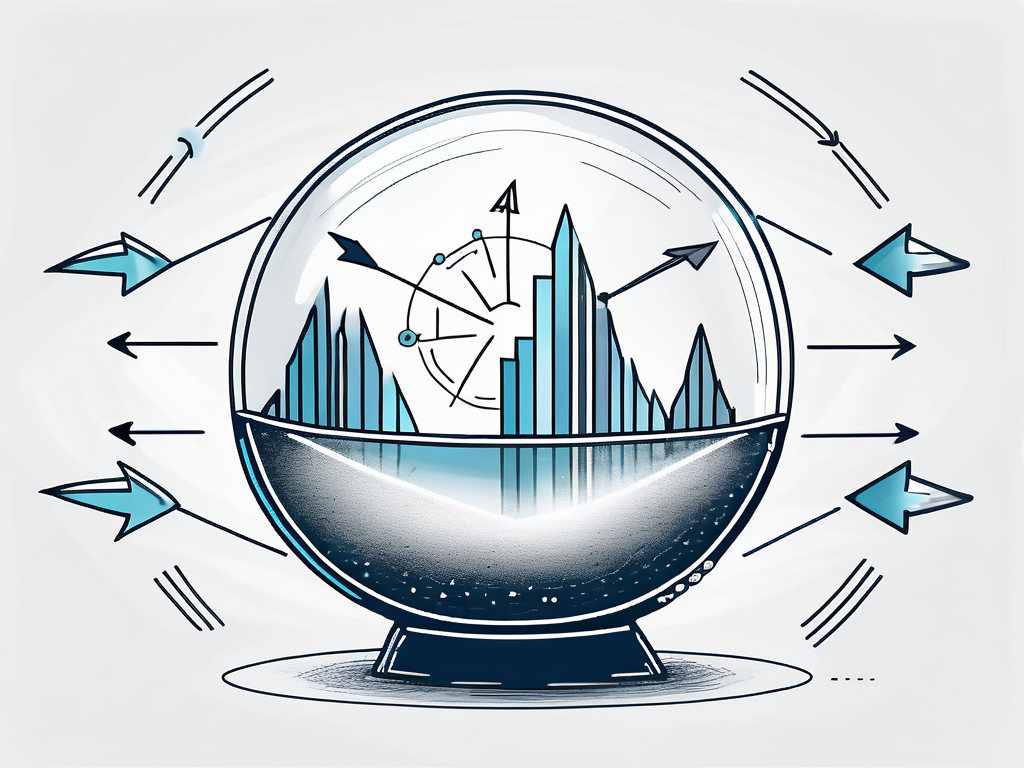Demand forecasting plays a crucial role in business decision-making, enabling organizations to anticipate customer needs and optimize their supply chain. By accurately predicting demand, companies can effectively plan production, manage inventory levels, and strategize their marketing efforts. This comprehensive guide will provide an in-depth understanding of demand forecasting, explore various forecasting methods, outline the steps involved in the process, and address the challenges faced in this endeavor.

Understanding the Basics of Demand Forecasting
Defining Demand Forecasting
Demand forecasting is the process of estimating the future demand for a product or service by analyzing historical data, market trends, customer behavior, and other relevant factors. It involves making educated predictions to anticipate the quantity of goods or services that will be demanded by customers over a specific period.
One crucial aspect of demand forecasting is the consideration of external factors that can influence demand. These factors may include changes in consumer preferences, advancements in technology, shifts in the competitive landscape, or even unexpected events like natural disasters or global pandemics. By incorporating these external variables into the forecasting process, businesses can better prepare for potential fluctuations in demand and adapt their strategies accordingly.
Importance of Demand Forecasting in Business
Accurate demand forecasting helps businesses make informed decisions regarding production, procurement, pricing, and resource allocation. It enables companies to optimize operations, reduce costs, and increase customer satisfaction by ensuring the availability of products at the right time and in the right quantities.
Furthermore, demand forecasting plays a vital role in strategic planning and risk management. By having a clear understanding of future demand patterns, organizations can mitigate risks associated with overstocking or understocking inventory, minimize supply chain disruptions, and capitalize on emerging market opportunities. This proactive approach not only enhances operational efficiency but also strengthens the overall competitiveness of the business in the market.
Key Elements of Demand Forecasting
Forecasting demand involves considering several key elements, including market trends, historical data, customer preferences, seasonality, economic indicators, and external factors. These elements help in developing robust forecasting models that can provide accurate predictions.
Moreover, the integration of advanced analytics and machine learning algorithms has revolutionized the field of demand forecasting, enabling businesses to leverage big data and real-time insights for more precise predictions. By harnessing the power of predictive analytics, companies can enhance their forecasting accuracy, identify hidden patterns in consumer behavior, and adapt swiftly to changing market dynamics, giving them a competitive edge in today’s fast-paced business environment.
Different Methods of Demand Forecasting
Qualitative Forecasting Methods
Qualitative forecasting methods rely on expert opinions, market surveys, customer feedback, and subjective judgments to predict demand. Techniques such as Delphi method, market research, and the jury of executive opinion are commonly employed to capture insights and forecasts from industry experts and stakeholders.
Expert opinions play a crucial role in qualitative forecasting as they provide valuable insights into market trends, consumer behavior, and industry dynamics. Market surveys help in gathering data directly from potential customers, enabling businesses to understand preferences and anticipate demand fluctuations. Customer feedback, whether through direct interactions or online reviews, offers a real-time perspective on satisfaction levels and future purchasing intentions.
Quantitative Forecasting Methods
Quantitative forecasting methods utilize statistical models and historical data to analyze patterns, trends, and relationships in demand. Techniques like time series analysis, regression analysis, and exponential smoothing are widely used in quantitative forecasting to generate accurate predictions based on numerical data.
Time series analysis involves studying past data points to identify recurring patterns and seasonal variations, aiding in forecasting future demand with a high degree of precision. Regression analysis helps in understanding the relationship between different variables and their impact on demand, allowing businesses to make informed decisions based on statistical evidence. Exponential smoothing is a popular technique for giving more weight to recent data points, ensuring that forecasts reflect the most current market conditions.
Choosing the Right Forecasting Method
Choosing the appropriate forecasting method depends on various factors, including the type of product or service, available data, forecast accuracy requirements, and the level of uncertainty in the marketplace. It is essential to select a method that aligns with the specific needs and characteristics of the business.
Businesses operating in fast-paced industries with constantly evolving consumer preferences may benefit from a combination of qualitative and quantitative forecasting methods to capture both market insights and numerical trends. On the other hand, companies dealing with stable products in predictable markets might find that quantitative methods alone suffice for generating reliable demand forecasts. Ultimately, the key to effective demand forecasting lies in selecting a method that not only meets current needs but also adapts to future challenges and opportunities.
Steps in the Demand Forecasting Process
Data Collection
The first step in demand forecasting is collecting relevant data, including historical sales data, market research reports, customer surveys, and industry data. Accurate and comprehensive data collection lays the foundation for developing reliable forecasting models.

Data Analysis
Once the data is collected, it needs to be analyzed to identify patterns, trends, and relationships. Statistical techniques, such as data visualization, correlation analysis, and regression analysis, can help in uncovering insights that contribute to accurate demand forecasts.
Making the Forecast
Using the analyzed data, forecasts are generated by applying appropriate forecasting models and techniques. These models consider historical trends, market dynamics, seasonality, and other relevant factors to predict future demand levels.
Evaluating and Adjusting the Forecast
After generating the initial forecast, it is essential to evaluate its accuracy and adjust it based on real-time information and feedback from customers, sales teams, and other stakeholders. Continuous monitoring and adjustment of forecasts help in improving their accuracy over time.
Implementation and Monitoring
Once the forecast is finalized and integrated into the business operations, it is crucial to monitor actual demand against the forecasted values. This monitoring helps in identifying any discrepancies or unexpected changes in demand patterns, allowing for timely adjustments to inventory levels, production schedules, and marketing strategies.
Collaboration and Communication
Effective demand forecasting involves collaboration between various departments within an organization, such as sales, marketing, operations, and finance. Clear communication of forecasted demand figures and assumptions ensures alignment across different functions, enabling a coordinated response to fluctuations in market demand.
Challenges in Demand Forecasting
Dealing with Uncertainty
One of the significant challenges in demand forecasting is dealing with uncertainties in the market, such as changing customer preferences, economic conditions, competitive dynamics, and unforeseen events. Businesses need to incorporate flexibility and agility into their forecasting processes to adapt to these uncertainties effectively.
Market uncertainties can stem from various sources, including geopolitical events, natural disasters, and technological advancements. These external factors can have a profound impact on consumer behavior and market demand, making it essential for businesses to monitor and analyze these trends continuously.
Managing Data Quality and Quantity
Poor data quality and inadequate data quantity can significantly impact the accuracy of demand forecasts. Companies need to invest in data collection, storage, and management systems to ensure that the data used for forecasting is reliable, up-to-date, and comprehensive.
Utilizing advanced analytics tools and techniques, such as machine learning algorithms and predictive modeling, can help organizations improve the quality of their data and enhance the accuracy of their demand forecasts. By leveraging big data technologies, businesses can gain valuable insights into consumer behavior and market trends, enabling them to make more informed decisions.
Addressing Seasonality and Trends
Seasonal fluctuations and trends in demand pose additional challenges in forecasting. Recognizing and incorporating seasonal patterns, such as holiday seasons, can help businesses adjust their production and inventory levels accordingly.
Furthermore, analyzing historical data and conducting market research can provide valuable insights into emerging trends and consumer preferences, allowing companies to anticipate shifts in demand and proactively adjust their forecasting strategies. By staying attuned to market dynamics and leveraging predictive analytics, businesses can stay ahead of the competition and meet customer demand more effectively.
By understanding the basics of demand forecasting, exploring different forecasting methods, and following the steps involved, businesses can enhance their ability to predict customer demand accurately. Overcoming the challenges associated with demand forecasting enables organizations to make informed decisions, optimize their operations, and establish a competitive edge in today’s dynamic marketplace.




